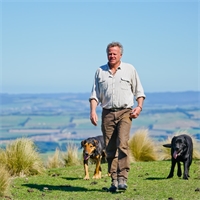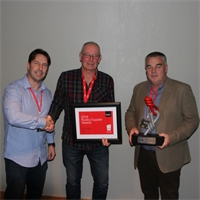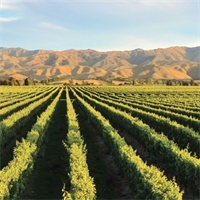Words by Ian Hodge, GM Tech Services, Veterinary Enterprises Group
Pause for a moment and wonder what life would be like on a stock farm without working dogs. Day after day they are there, ready and willing to work, not arguing or demanding a pay increase, not being late or absent without leave. Always happy to be told what to do, and because of their genetics, only ever want to please their master.
All stock farms most likely have one or more dogs. Even dairy farms use dogs to help move cattle around. Flat farms, rolling hill farms and steep high-country farms all use them. They run alongside motor bikes, trucks or horses, and even ride in choppers. They ride in stock trucks and from time to time have their own sports day-The Dog Trials.
I once knew a farmer whose dog was like his right arm. When she lacerated a major tendon in her hind leg and couldn’t work, life suddenly became so much more difficult for him. There may have been other dogs to use, but this one had a stock sense that was invaluable.
The health of working dogs is therefore very important. They should have access to the same veterinary care that “pets” have access to. They make a monumental contribution to our nation’s agriculture, yet we often neglect to take proper care of them.
When did you last ask a veterinarian to check all your working dogs? If it has been a while maybe now, before the busy summer season begins, would be a good time to ask your vet to check all your working dogs.
Working dogs need to be fit and mobile. For this they need healthy eyes, hearts, lungs and legs. An examination of the cardiovascular system and the lungs would indicate to you if all is well or if there is something that needs attention. Older dogs can develop heart disease (as humans often do) and become slower and more breathless. It may be as simple as some tablets to rectify any issues.
Musculoskeletal problems and trauma are common in working dogs. Wire lacerations, skin tears, fractures and dislocations occur often. Veterinarians spend considerable time operating on traumatic injuries. Rupture of the knee ligaments (cruciate) is one of the most common injuries. This can now be very successfully repaired using titanium wedge implants. The dogs walk out of the clinic often the same day.
Working dogs need to eat good quality food. Often their diet is inadequate to meet their nutritional requirements. Meat alone is not sufficient for working dogs. Even humans could not last too long on meat alone. Why not ask your veterinarian to examine the teeth of your working dogs to check all is OK? At the same time, you could discuss nutrition. There are some very high-quality dog foods available now. Dental care for dogs is now similar to human dentistry.
Have you ever considered that your working dogs may be in pain? Arthritis is common in working dogs. There are medications available now that are safe and very effective. A check up at your vet clinic would highlight any problems with joint health and provide solutions to manage the disease.
So maybe now is a great time to have a “working dog wellness” session. Your veterinarian would be happy to examine your dogs on farm if that is easier. Some clinics asset aside days when they focus on working dogs. Why not give them a call?
A finally don’t forget that working dogs should also be vaccinated against all the horrible infectious diseases that are definitely alive and well in this area.
Related

The Bethells have been synonymous with North Canterbury farming for almost as long as there have bee...
Read More

Aakland Chemicals have been working with Ruralco for just three years but in this short time they ha...
Read More

For many years New Zealand’s horticultural sector has played second fiddle to the country’s major ...
Read More